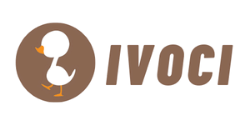5 Tang Dynasty Hanfu & Accessories
BGM: China-Rain
Tang dynasty (Chinese: 唐朝; pinyin: táng cháo) was one of the Chinese dynasties that succeeded the Sui dynasty and preceded the Five Dynasties and Ten Kingdoms period.
The Tang dynasty was founded by the Li family (李), who took power during the decline and collapse of the Sui dynasty.
The Tang dynasty, with its capital at Chang’an (now Xi’an) which was then the world’s most populous city, is considered one of the high points in Chinese history, a golden age of cosmopolitan culture.
Let’s take a look at Tang dynasty hanfu and accessories together.
(Click the name of the type of hanfu to read more)
1. Qixiong ruqun (Chinese: 齐胸襦裙 ; pinyin: qí xiōng rú qún)
Qixiong ruqun (Chinese: 齐胸襦裙 ; pinyin: qí xiōng rú qún), also known as qixiong shanqun (Chinese: 齐胸衫裙 ; pinyin: qí xiōng shān qún) and “chest-high ruqun”, is one a set of hanfu, traditional Chinese clothing worn by Han Chinese people.
Qun (the skirt) used in qixiong ruqun is generally tied above the chest.
Since the Han and Jin dynasties, the skirt is usually tied at the waist. While in the Sui, Tang, and Five Dynasties, the skirt is tied much higher, usually above the chest or below the armpits.
2. Banbi (Chinese: 半臂 ; pinyin: bàn bì)
Banbi (Chinese: 半臂 ; pinyin: bàn bì), also known as banxiu (Chinese: 半袖 ; pinyin: bàn xiù), is a short top developed from the upper ru (Chinese: 襦 ; pinyin: rú) since the Wei and Jin dynasties.
Banbi is a type of short-sleeved jacket in ancient China, developed from half-sleeved in the Han and Wei dynasties.
The length of the banbi reaches the waist and the sleeve length is less than the elbow.
Banbi was very popular in the early Tang dynasty, which is associated with wearing a small sleeve jacket at that time.
3. Daxiushan (Chinese: 大袖衫 ; pinyin: dà xiù shān)
Daxiushan (Chinese: 大袖衫 ; pinyin: dà xiù shān) which means big sleeve robe is a traditional Chinese outer garment, with wide sleeves.
Daxiushan can also be referred to as dianchailiyi (Chinese: 钿钗礼衣 ; pinyin: diàn chāi lǐ yī) and dashan (Chinese: 大衫 ; pinyin: dà shān) or daxiu (Chinese: 大袖 ; pinyin: dà xiù) in the Ming dynasty.
Daxiushan was most popular during the Tang dynasty, especially among the royals.
Daxiushan can be with a central front collar or dui-jin, long sleeves, and with slits and straps.
After the Tang dynasty, the daxiushan also continued to be used in the Song and Ming dynasties.
4. Yuanlingpao (Chinese: 圆领袍 ; pinyin: yuán lǐng páo)
Yuanlingpao (Chinese: 圆领袍 ; pinyin: yuán lǐng páo) is a form of an upper garment with a round collar.
Yuanlingpao is often also referred to as yuanlingshan (Chinese: 圆领衫 ; pinyin: yuán lǐng shān) or panlingpao (Chinese: 盘领袍 ; pinyin: pán lǐng páo) and when used as a robe it is called paofu (Chinese: 袍服 ; pinyin: páo fú).
Yuanlingpao is a formal dress usually worn by men, although it was also fashionable for women to wear it in some dynasties, such as during the Tang dynasty.
The yuanlingpao, which was girded with a belt, became a distinctive form of dress for men and women of the Tang dynasty because it was fashionable for women to dress like men in this period.
5. Pibo (Chinese: 披帛 ; pinyin: pī bó)
Pibo (Chinese: 披帛 ; pinyin: pī bó), also known as pizi (Chinese: 披子 ; pinyin: pī zi), is a kind of decorative shawl, which was introduced to China by the Silk Road from West Asian culture, and later became a hanfu accessory.
Although commonly called pibo, the name “pibo” actually appeared around the end of the Tang dynasty. Previously, pibo was often referred to as pei (Chinese: 帔 ; pinyin: pèi).
Pibo then spread to Korea, Japan, and Vietnam, and was mostly worn by women, usually draped over the shoulder, or wrapped around the elbow.
Pibo became popular in the Sui and Tang dynasties.
In the early Tang dynasty, the pibo was worn with one end tucked into the waist of a skirt or half sleeve, and the other end wrapped around the shoulders and hung naturally.
In the late Tang dynasty and Five Dynasties and Ten Kingdoms, it was popular to wear the pibo from back to front, and then put it on the other arm, it takes about five meters of silk to wear the pibo in this way.
At that time, pibo had no clear dress system requirements, only for decoration.

Leave a Reply